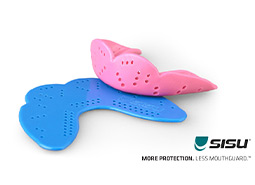At one point or another, you’ve likely done the tried-and-true bridge exercise. And while it’s easy to scoff and claim that the bridge hardly qualifies as an exercise, this is simply untrue. Performing bridges on a regular basis offers a wide array of fitness benefits that can make your body stronger, improve athleticism, and give you a fantastic-looking rear! Let’s take a closer look at these benefits in more detail, and then show you how to perform bridges on your own.
Tighten your rear
There’s no denying that a firm butt is something almost every woman wants, and performing bridges regularly is an excellent way to sculpt one. Because bridges strengthen your glutes, they can give your booty eye-popping definition. And if you up the ante and add some weights to this exercise, you’ll get an even firmer, more toned butt.
Become more athletic
A hot-looking butt isn’t the only reason to do bridges. This classic exercise can also provide a boost to your athletic performance. When it comes to producing power, strong glutes are key. And the more power you have, the higher you’ll jump, faster you’ll sprint, and more explosive you’ll be on the field or court.
Build a strong core
While a great-looking butt is one major benefit of bridges, strengthening your core is another. The bridge exercises a range of muscles, including the rectus abdominis, transverse abdominis, and obliques. In other words, bridges can help you flatten your tummy, sculpt a six pack, and shape an hourglass figure. Best of all, you don’t have to perform multiple variations of bridges to gain the benefits; any type of bridge will exercise all these muscles.
Better posture, stronger back, less pain
In addition to the glutes and core, the bridge also stretches and strengthens your spinal muscles. Because it does all three of these in one simple exercise, you gain a number of benefits from performing them on a regular basis. Your posture will improve, you’ll be less likely to injure your spine or back and, if you work in an office, you’ll even have less pain from sitting all day.
How to do bridges
Here are two variations of the bridge to get you started.
Full bridge - This is the one most of you likely remember from gym class, where you use your hips and arms to lift your entire body off the ground. For a refresher on how to do it, find a hard surface to lie on, and follow these steps.
- Lie on your back, and move your feet hip-width apart.
- Bring both hands up to the side of your head.
- Put your palms face down on the floor with your fingers pointing to your legs.
- Now push your hips ups and lift your body with your arms, rounding your back as much as possible.
- Deepen the stretch by pushing up with your arms, lengthening them in the process.
- Hold the pose for one second, then slowly lower yourself to the floor.
If performed correctly, you should feel a tightness in your butt, abs and leg muscles while doing the exercise. To gain the maximum benefits, do 15 reps of this twice.
Weighted bridge - To do this exercise, you’ll need a hard surface to lie on and a weight. Once you have both, follow these steps:
- Lying on your back, bend your knees while placing your feet hip-width apart.
- Place the weight on top of your hips and hold it with your hands to ensure it stays in place.
- While keeping your back straight, use your glutes and core muscles to lift your hips off the ground as high as possible.
- Hold this for one second, then lower your hips down to the floor.
Repeat this exercise 10 times for two sets.
Now that you know there is actually more benefit to bridges than you imagined, try incorporating this exercise into your workout routine to see how it goes. If you have any questions, would like to sign up for a gym membership, or are hungry for more fitness tips, feel free to give us a call at any time.



Leave a comment!
You must be logged in to post a comment.